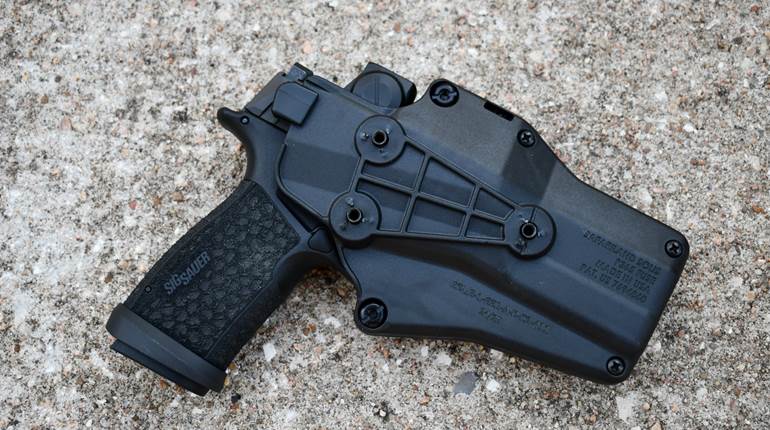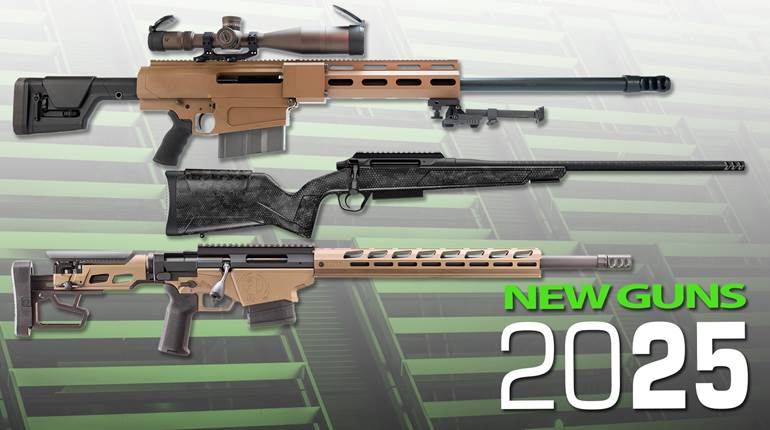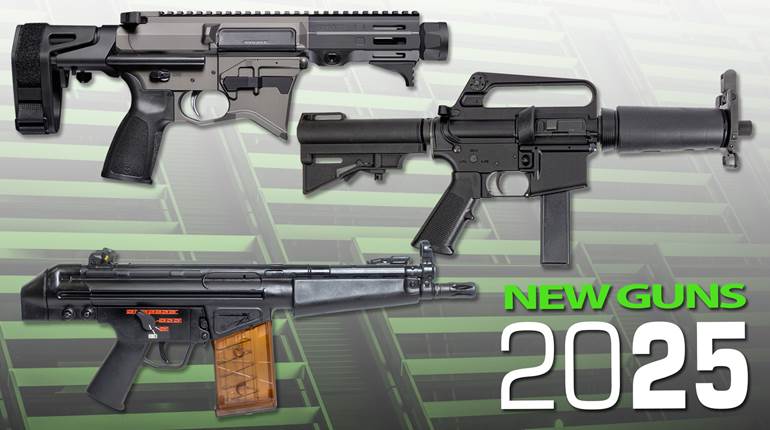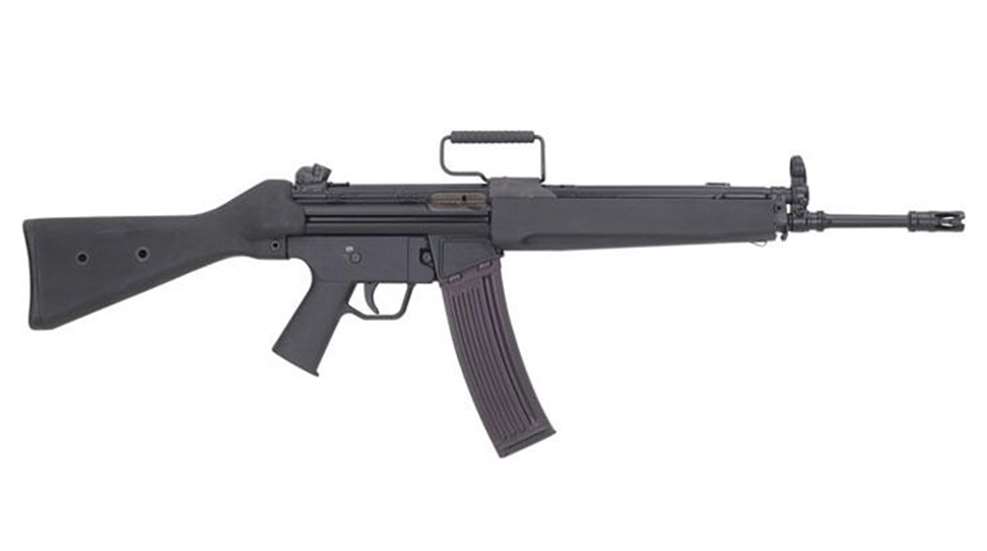
Last summer, I had the opportunity to spend some quality time with a Heckler & Koch (HK) MP5 chambered in 9 mm. As the rangemaster explained the proper operation of that handy little submachine gun, it struck home that I've spent very little time getting to know the roller-delayed blowback action rifles like those that HK and other companies produce. The platforms have certainly earned a positive reputation on the battlefield with semi-automatic versions maintaining a devout civilian following here in the United States. 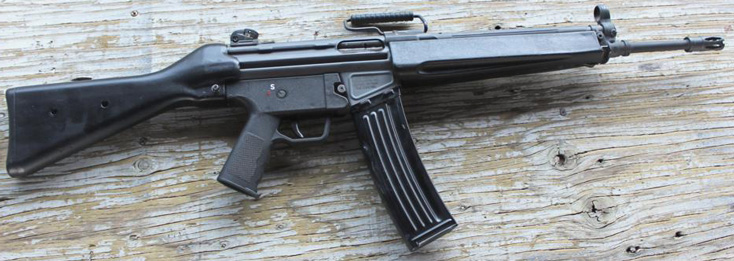
Unfortunately, many of these rifles (notably the HKs) tend to be quite expensive, which explains why I haven't shot them more often. But the MP5 gave me a roller-lock itch that I wanted to keep scratching, so I jumped online and started looking around to see if there might be another option that doesn’t cost an arm and a leg. What I found was the Century Arms C93 chambered in 5.56 NATO/ .223 Rem. This semi-automatic rifle is assembled by Century using a mix of surplus military components and new American-made parts. The result is a semi-auto copy of the HK93 with a control set and appearance like the original but at a much more affordable price.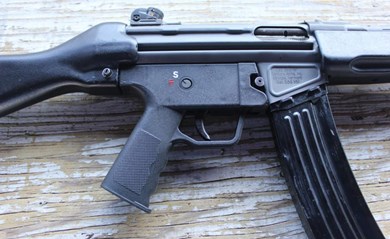
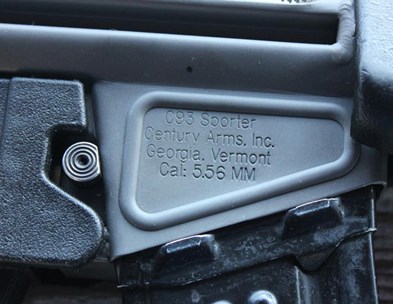
The C93's sheet steel upper receiver is easily identified as a new component thanks to stampings on the right side of the magazine well. It appears that all of the major external metallic components have been treated with a gray Parkerized finish. A folding carry handle is located on top of the receiver. The black polymer housing for the fire control group also looked new.
The polymer fore-end and shoulder stocks wore some of the dings and scratches that come with use, but not abuse. The other components and controls, including the safety selector, bolt tube and assembly pins, showed signs of wear, but were certainly not worn out. Overall the fit and finish of the rifle was quite good with all of the controls and moving parts looking and behaving in a properly assembled fashion. Considering that factory original HK93s were selling for somewhere between $1,800 to $2,500 online at the time of this review, I found the condition of the C93, which usually sells for less than its suggested retail price of $870, to be a solid investment.
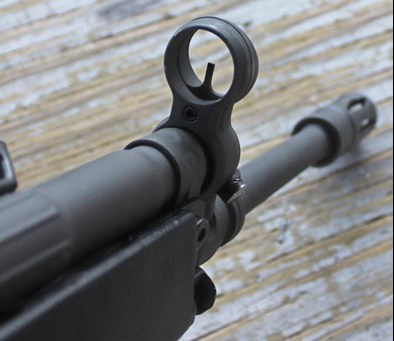
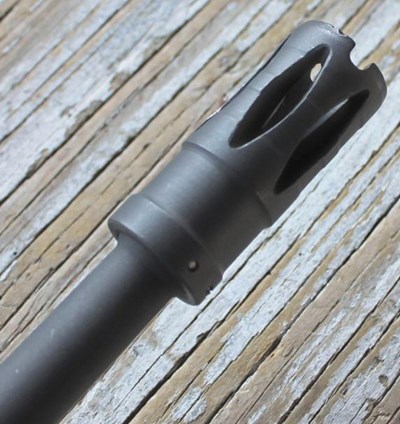
The front trunnion is welded in place to support the 16.25" barrel. The muzzle is fitted with a removable flash hider held in place with a spring clip. Above the barrel is the sheet metal support tube for the recoil assembly. A forward folding charging handle, located on the left side, allows right-handed operators to maintain a shooting grip. Pulling the charging handle all the way to the rear and tipping it upward slightly locks the bolt in the open position. With a fresh magazine installed, giving the locked open charging handle a little downward slap allows the bolt to slam shut. I really like this type of charging handle configuration because it's so intuitive to operate.
The factory sight system consists of a hooded post in the front and a twist knob aperture sight at the rear which is both height and windage adjustable. The right side round magazine release button is located on the magazine well where it can be operated by the trigger finger. The safety selector is on the left side of the polymer trigger housing above the fixed checkered grip.
The wide, smooth-faced steel bow trigger is protected by a generous integral trigger guard. The trigger pull was smooth, but a little heavy, at 7 lbs. 8 oz. according to a Lyman's digital trigger gauge. The fixed shoulder stock provides a 13.5" length of pull. A steel ring sling mount is attached to left side of the front sight with a sling loop mounted in the left side of the shoulder stock.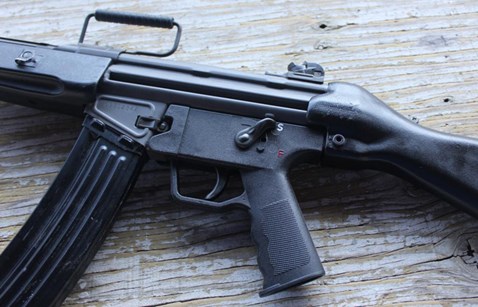
Like the HK93, the C93 employs a roller-delayed blowback action which has notable differences when compared to the direct gas impingement system of the AR-15 or the gas piston system of the AK-47. The bolt is mounted in a bolt carrier group supported by a single round wire spring and steel rod recoil assembly. When the action is closed (ready to fire) the bolt is secured in its forward position by a pair of steel rollers which fit into small cutouts in the chamber. As the gun fires, all of the expanding gasses produced by the cartridge are directed though the barrel which in turn drives, or blows, the cartridge case directly back against the bolt. While the rifle’s internal pressure levels are at their highest the bolt remains locked in the closed position. When the pressure drops as the bullet and gasses exit the muzzle, the tension on the rollers is reduced to the point that they release the bolt, allowing it to open and eject the spent round. This roller lock system has proven to be clean and reliable but it is more technically demanding to build resulting in higher manufacturing costs.
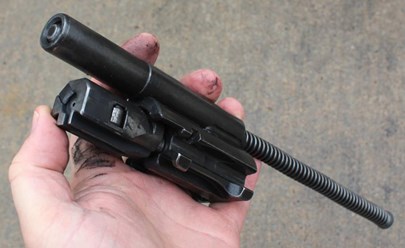
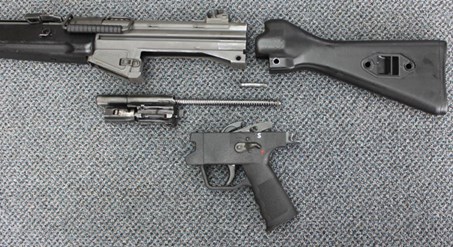
Field stripping the C93 for basic cleaning and lubrication is a simple process. After removing the magazine and verifying the rifle is completely unloaded, close the action. Remove the shoulder stock takedown pin located just behind the pistol grip. The pin can be placed back in the stock for safe keeping. With the stock removed, pull down on the pistol grip to separate the polymer fire control group from the receiver. Pull the folding charging handle rearward to press the recoil assembly and bolt carrier group out of the opening at the rear of the receiver. The recoil assembly can then be removed from the bolt carrier. The various components can be broken down further for repairs. However, this level of disassembly is sufficient for routine maintenance.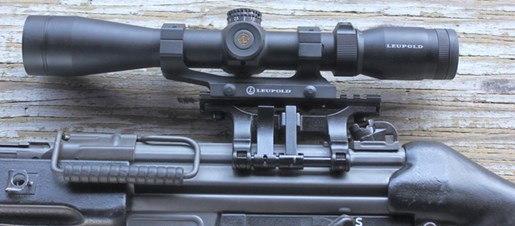
Taking the C93 to the shooting range was a positive and informative experience. Although running the rifle was easy to do, it was notably different from using an AR or AK due to its control configuration and how the action changes the nature of the felt recoil. It was not uncomfortable or unmanageable, yet it produces a distinctive shove to the shoulder that is unlike other platforms in the same class. It was nice and handy for off-bench shooting with the sights proving to be useful and easy to acquire for close range work.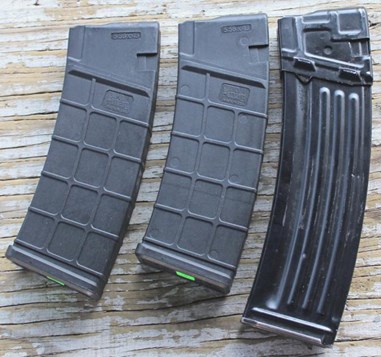
The lone 40-round aluminum magazine provided with the rifle was completely reliable. Unfortunately, these original magazines are hard to find and quite expensive. The good news is that ProMag provides an affordable ($24.49) 30-round polymer aftermarket magazine (HEC-A9) which fits this platform nicely. They functioned reliably as well.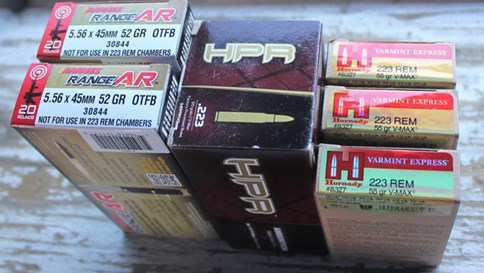
The C93 reliably digested all of the 5.56 NATO and .223 Rem. ammunition it was fed, which ranged from practice grade FMJ to premium hunting rounds. For accuracy testing, the gun was fitted with my trusty Leupold V-RX 3-9x40 Fire Dot scope using a UTG MNT-HK02 Gen 2 steel Stanag claw mount with 5.5" Picatinny rail from Leapers. It should be noted that this scope base rides high. I maxed out the downward adjustment knob on the scope and was still shooting a little high.
I wasn't sure what to expect in the accuracy department since rebuilt surplus rifles can be something of a mixed lot depending on the parts used and who is doing the rebuilding. However, the C93 turned out to be a solid shooter at 100 yards. The single best 5-shot group of 1.03" and the best five group average of 1.31" were produced using Hornady Varmint Express .223 Rem. 55-gr. V-Max ammunition. HPR HyperClean .223 Rem. 60-gr. V-Max turned in an average of 1.79" followed by Barnes Ranger AR 5.56 NATO 52-gr. OTFB at 1.83".
In a market that is currently replete with ARs and AKs, the Century Arms C93 roller-delayed blowback action rifle is an HK-type platform available at a price folks can afford. Although there are not as many accessories or custom components for this gun, it’s rugged and reliable with a useful set of features. It can comfortably fill the same plinking, hunting and self-defense roles as other 5.56/.223 semi-automatic combat rifles in its class.
Specifications
Manufacturer: Century Arms
Model: C93
Action: Roller-Delayed Blowback Semi-Auto
Caliber: 5.56x45 NATO/ .223 Rem.
Finish: Grey Parkerizing
Stocks: Black Polymer
Front Sight: Hooded Post
Rear Sight: Twist Adjustable Aperture
Barrel Length: 16.25"
Muzzle: Removable Flash Suppressor
Overall Length: 36.5"
Height: 8.5" at Pistol Grip
Weight: 8-lbs. 6-oz. with Empty Magazine
Capacity: 40+1 Rounds
Twist: 1:9" RH
Rifle Grooves: 6
Accessories: One Magazine, Trigger Lock, Owner’s Manual
MSRP: $869.99













